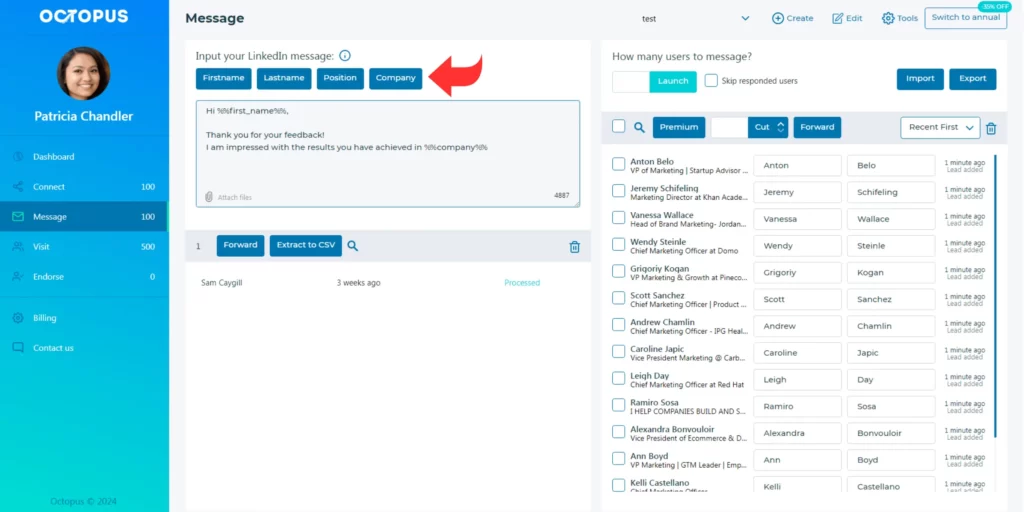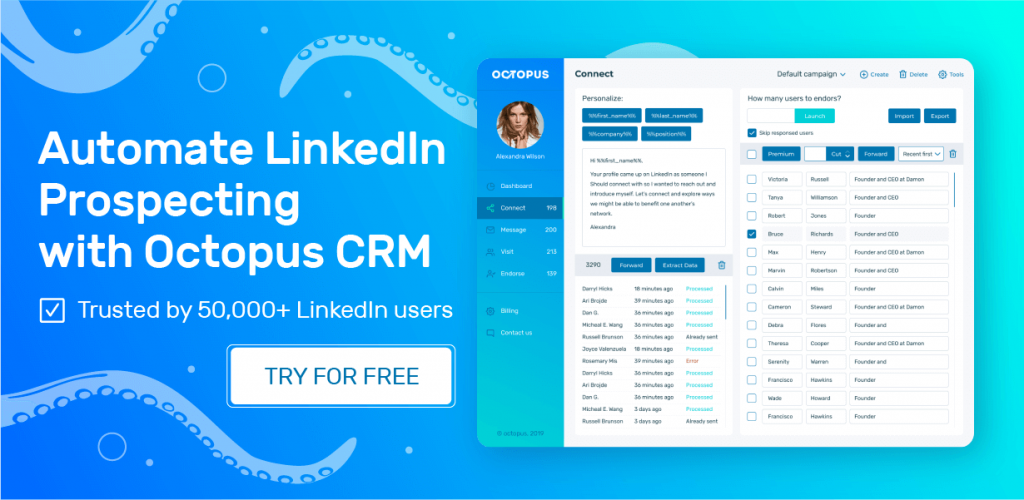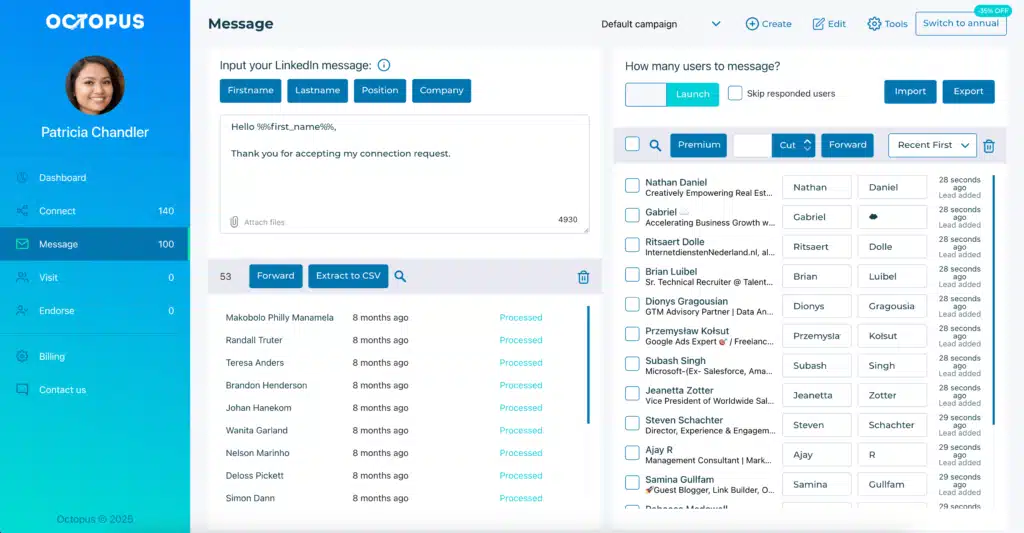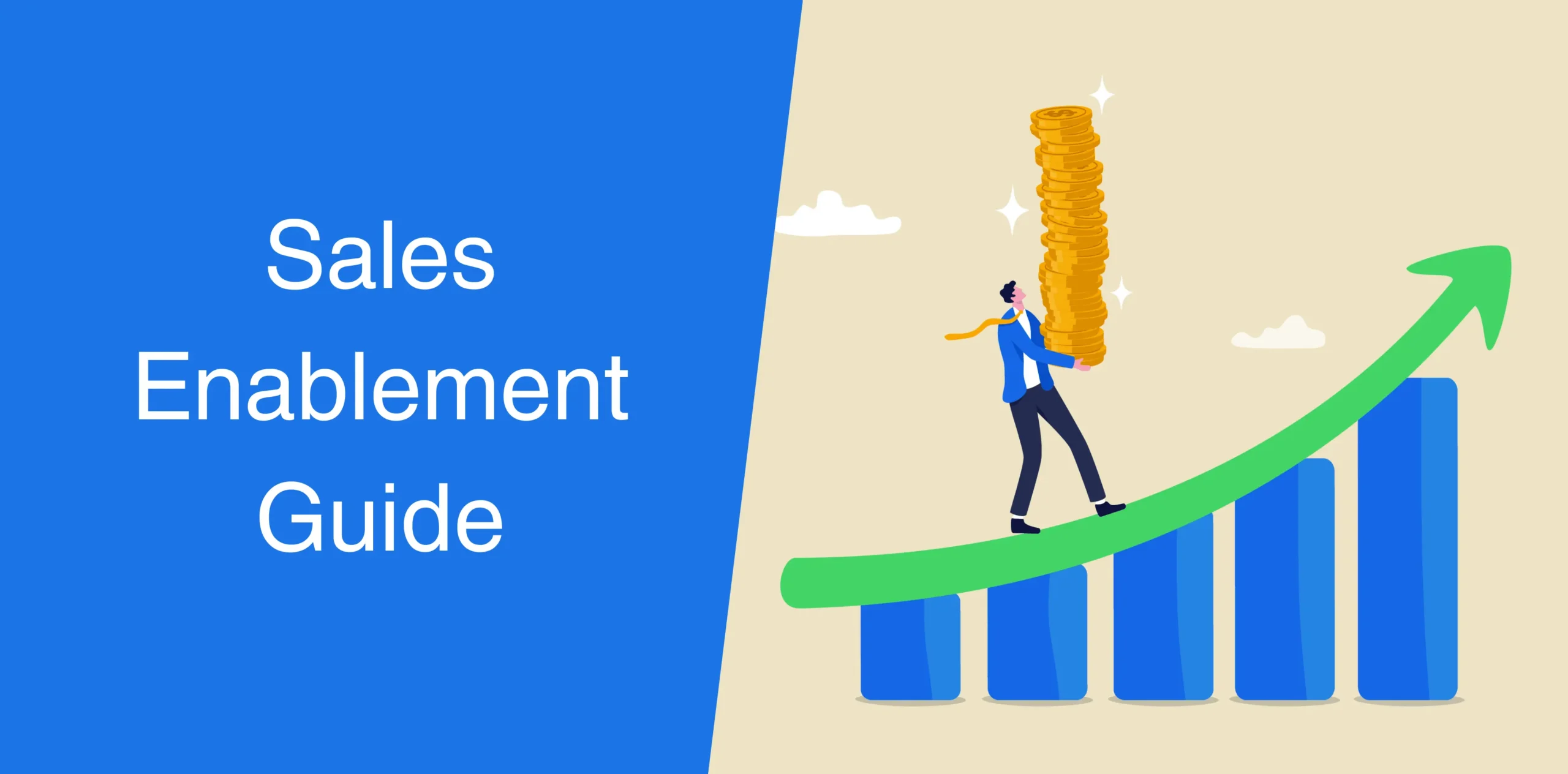Sales enablement is the process of equipping your sales representatives with everything they need to engage prospects and close more deals.
As you know, B2B sales has become hyper-competitive where every interaction counts. Prospects expect relevance, precision, and value delivery at every touchpoint. Achieving success in this environment comes down to your team’s preparation.
This is where an effective sales enablement program steps in to help your team achieve their goals and targets as efficiently as possible.
In this guide to sales enablement, we’ll cover the definition, building blocks, benefits, framework, and strategy of sales enablement.
What Is Sales Enablement?
Sales enablement is the process of giving all the necessary tools for the sales team and useful resources, tactics, training, insights, support, and platforms they need to close deals faster. The most important resources include content, analytics, and technology required to optimize the sales process.
The idea is to help your sales reps execute sales prospecting correctly and act as trusted advisors for your prospects and clients, build lasting customer relationships, and increase overall organizational profitability. With all the resources at their fingertips, your sales reps will be able to provide potential clients with all the information and insights they need to make purchase decisions.
Sales enablement also helps decrease the gap between marketing, sales, customer success, and revenue operations so that all teams work cohesively to engage the right prospects.
It plays an important role in removing silos between the departments, facilitating them to align their efforts, share resources, and communicate seamlessly. This, ultimately, improves customer experience and drives better sales outcomes.
Below, we’ve explained the most essential elements of sales enablement:
- Content: This includes product brochures, case studies, whitepapers, and customizable outreach templates. High-quality content will help your sales team address customer pain points and present solutions faster;
- Training: Training goes beyond one-time sessions. It involves continuous education and skill development to keep your sales team informed and adaptable. A good training program will cover product knowledge, objection handling, and understanding customer needs. Consider using interactive sessions, role-playing exercises, and e-learning modules for training;
- Technology: The right technology, such as a sales enablement platform, centralizes resources, making them easily accessible to your team. CRM, analytics dashboards, and automated workflows enhance efficiency and provide valuable insights;
- Metrics: Key metrics such as content engagement, win rates, sales cycle length, and revenue growth will provide your reps with actionable insights. Tracking these metrics can help you identify strengths, address weaknesses, and make data-driven decisions to optimize your strategy;
- Sales Enablement Tools: The right sales enablement tools will streamline processes, such as content management, sales training, and performance analytics. Plus, Octopus CRM LinkedIn automation tool can enhance prospecting, allowing your team to identify and engage with leads more effectively.

These sales enablement solutions work together to create an environment where sales teams are more prepared and productive.
What Is the Goal of Sales Enablement?
The goal of sales enablement is to help your sales team sell more by eliminating barriers, simplifying workflows, and enhancing customer experience from the initial contact to the final sale and beyond.
You can achieve this goal by:
- Equipping your team with relevant, high-quality sales enablement content strategy;
- Streamlining the sales enablement process so reps spend more time selling;
- Creating alignment between marketing and sales for consistent messaging;
- Providing actionable insights in the form of sales enablement metrics.
When implemented properly, sales enablement solutions can reduce inefficiencies, increase win rates, and improve the buyer’s experience. Plus, they can shorten the sales cycle and increase sales revenue.
Why Is Sales Enablement Important?
Many sales reps start with little to no direction at the start of a deal. They have little information about the decision-makers and other participants. Plus, they have to figure out the strategy to approach their target customers or prospects, identify their needs, and deliver a tailored solution.
Sales enablement helps the sellers through this entire process, expediting the steps and giving them access to critical information and resources.
Without proper training and support, sellers often struggle to move leads through the pipeline. And just like that, revenue slips away.
The role of sales reps is becoming more advisory and less transactional. This shift means your sales team needs to have a better understanding of their product, prospects, and market conditions to bring real value to every interaction.
Also, while virtual selling is more difficult than in-person interactions, a large percentage of sales professionals have not received training for it. Modern buyers are more informed and selective, meaning they want tailored solutions instead of just a product.
Sales enablement can help your team overcome these barriers and increase efficiency.
Personalization and Adaptability

Sales enablement provides reps with the tools and knowledge to deliver highly customized solutions that address specific customer pain points. This level of personalization builds trust and improves the chances of conversion.
Moreover, sales enablement frameworks help you adapt quickly to changing buyer behaviors and market dynamics. Whether it’s incorporating new technology, revising strategies based on metrics, or training teams on emerging trends, sales enablement keeps your organization agile and competitive.
Efficiency
Since sales enablement involves streamlining processes and centralizing resources, it gives your team the time they need to focus on what they do best selling. In other words, it saves the time reps spend searching for content or preparing materials because now they have everything at their disposal. This can increase overall productivity.
Consistency
Unified messaging across the organization means every customer interaction will reflect your brand’s values and solutions. This cohesiveness will improve brand reputation and ease the buyer’s journey.
Data-Driven Decisions
Your team can use the insights from sales enablement tools and metrics to make informed decisions. Knowing what works and what doesn’t allow for continuous improvement and more targeted outreach.
Collaboration
Sales enablement catalyzes collaboration between sales, marketing, and RevOp teams. The shared goals, strategies, and resources help sellers engage prospects more cohesively.
Support Your Sales Team to Boost Retention and Revenue
Sales enablement provides your team with the tools, training, and resources they need to thrive. This can help increase job satisfaction, reduce employee turnover, and directly contribute to revenue growth.
Furthermore, incorporating sales coaching into your enablement plan strengthens the relationship between sales reps and their managers. This helps promote a more supportive work environment and further decreases turnover.
Sales Enablement Strategy

A sales enablement strategy provides a roadmap for equipping your sales team with the essential tools, resources, knowledge, and processes required to sell effectively. It outlines the key elements — who is involved, what is needed, how to implement it, and why it matters.
This strategy provides a framework for refining sales content, training and coaching, and identifying the right platforms and tools to improve sales team productivity with ease.
With a good sales enablement strategy in place, every team member will understand their role, have the right resources, and know how to engage prospects. Plus, a clear strategy encourages accountability, helping teams to stay focused on their objectives.
Creating a successful B2B sales strategy requires careful planning and collaboration. You must also tailor it to your company as organizations differ in their nature and operations.
Here’s a step-by-step guide to help you build a reliable sales enablement process:
1. Designate a Leader
The first step is to designate a sales enablement manager who will spearhead the initiative. This individual should have the skills to bridge the gap between sales and marketing while having the trust and support of executive leadership. Their role includes overseeing the enablement process and ensuring alignment across teams.
2. Develop a Sales Enablement Charter
Create a comprehensive sales enablement charter to serve as your organization’s blueprint. This document should:
- Define the purpose and scope of your enablement program;
- Identify who is responsible for each aspect of the program;
- Set measurable goals and describe the desired impact on the organization.
3. Team Alignment

A successful sales enablement strategy requires a unified organization. It is important to dismantle silos and create a culture of collaboration between departments, especially marketing and sales.
All employees should understand the role of enablement and how teams will collaborate to support it. Frameworks like RACI can help clarify responsibilities and establish shared goals.
Your sales enablement charter will also help create alignment across teams and provide a scalable framework for future growth.
4. Training and Coaching
Even the best enablement strategy can fail if sales reps lack proper training and coaching. That’s why it is important to provide your team with resources that enhance their skills and ensure consistent use of systems.
Continuous learning can reinforce knowledge and help reps adapt to evolving sales processes. A culture of continuous improvement can also refine their techniques, besides helping them meet quotas and respond to changing buyer needs.
5. Equip Your Team
Give your sales team the resources they need to succeed. These include:
- Content and Collateral: White papers, data sheets, product videos, and playbooks guide reps through every stage of the sales process;
- Buyer Insights: Share detailed buyer personas, pain points, and industry-specific knowledge to help reps build lasting relationships;
- Enablement Tools: Use technology to streamline workflows, such as automating content delivery, having a unified data repository, and embedding training into daily activities.
It is a good idea to have a sales content management system in place so that your team can access essential, up-to-date, and trackable materials immediately.
6. Monitor Progress and Gather Feedback
Regular feedback and performance monitoring are essential for auditing and improving your enablement strategy.
- Use surveys, interviews, and meetings to gather input from sales reps and leaders about onboarding and ongoing enablement experiences;
- Collaborate with sales executives to identify deal challenges, competitive barriers, and areas where enablement can accelerate progress;
- Incorporate the best CRM software, LMS, CMS, and analytics platforms to simplify tasks and enhance performance.

Sales Enablement Content
Sales enablement content refers to the resources that sales representatives use during the selling process. This can include essential product knowledge or informational materials created to help close deals.
Often, sales enablement content is created in collaboration with other departments.
For instance, your marketing team might develop a visual illustration or a physical version of an elevator pitch that your reps can embed in their outreach messages. Similarly, they might create a list of product benefits to ensure consistent messaging when reps engage with qualified leads.
The right sales enablement content strategy will help your sales team address a prospect’s complaints, questions, or concerns immediately at each stage of the buyer’s journey.
Below are some sales enablement examples of content types:
- Buyer personas;
- Product brochures and datasheets;
- Battle cards;
- Case studies and testimonials;
- Talk tracks;
- Customizable email templates;
- Whitepapers and eBooks;
- Sales playbooks;
- Interactive demos and presentations;
- Sales scripts;
- Win/loss stories;
- Slide decks;
- LinkedIn outreach message templates and examples;
- Blog posts;
- Customer testimonials;
- Webinars.
Your sales enablement content should be easy to access, relevant, and regularly updated to remain effective. Also, while training your team to use sales enablement content might feel overwhelming, the right tools can make it simple.
A platform like a cloud-based e-learning platform can help streamline training for both new and current employees, showing them how to use the right content at the right stage of the buyer’s journey. Plus, it will keep your entire sales team on the same page, promoting consistency.
When creating your content, it is a good idea to focus more on benefits than your product’s features and customize your materials for different segments and buyer personas.
Also, keep it clear and concise besides using visuals like charts, infographics, and videos to simplify complex concepts.
Sales Enablement Software

Technology is at the core of any modern sales enablement solutions. Sales enablement software helps your team organize all materials and content in one convenient place.
This software allows you to create, share, edit, and manage resources seamlessly. Plus, sales reps have on-demand access to the information they need, while marketing and sales teams can seamlessly collaborate on content to share with prospects and customers.
A robust sales enablement platform can:
- Centralize resources for easy access;
- Automate repetitive tasks;
- Provide actionable insights through analytics;
- Integrate with your CRM for seamless data sharing.
Sales enablement software encompasses a broad variety of tools, including communication platforms, dialers, and sales asset management systems. Selecting the right tools for your team is an essential component of an effective sales management strategy.
- Sales Engagement Software: This software helps sales teams interact with potential customers through various multiple channels, such as email, phone, and social media;
- Sales Content Management Platform: If your product is complex, such as enterprise software, you need a reliable content management platform. It lets you organize enablement content, such as blogs, whitepapers, case studies, PDFs, videos, and other sales materials that reps use;
- Short-Form Video Platforms: A newer category of sales tools, short-form video platforms are excellent for creating engaging, bite-sized videos for outreach. Your reps can use it to record quick videos, embed them in emails or LinkedIn messages, and engage prospects in a more personalized and digestible format;
- Sales Intelligence Software: Sales intelligence software provides insights about a prospect’s business, making it a great option for B2B SaaS businesses. This allows sales teams to tailor their outreach to align with the prospect’s specific needs, optimizing every interaction for better results;
- Sales Intent Tool: Sales intent tools help you identify qualified leads based on key data points, such as the roles or titles of website visitors. This allows for more targeted and efficient outreach, maximizing the likelihood of converting leads into customers.
Each of these tools serves a unique purpose, and choosing the right mix can improve your team’s productivity and success.
Some of the most popular sales enablement tools include platforms like HubSpot and Showpad. When choosing software, choose the one that addresses your team’s specific needs and challenges.
For instance, some platforms excel at content management, while others are created specifically for training and performance tracking.
Also, consider:
- Scalability for long-term adoption;
- Centralized storage and easy retrieval;
- Insights into content performance and sales activities;
- Compatibility with existing tools like your CRM;
- Intuitive design for faster adoption.
Sales Enablement Framework
A sales enablement framework is the backbone of your sales enablement strategy. It defines how you will equip your sales team with the tools, training, and resources they need to excel.
Think of this framework as a roadmap for empowering your sales team. It guides you on how to use your team’s full potential, enabling them to drive outstanding results and contribute to sustained revenue growth.
An effective sales enablement framework ensures that every component works together harmoniously.
Here’s a simple framework to consider:
- Assessment: Identify gaps in your current sales process through research and assessments;
- Create SMART goals: What targets do you want to attain with your framework? Make sure your SMART goals are realistic and specific;
- Map the buyer’s journey: It should map out the different stages buyers go through in order to make a decision;
- Implementation: Roll out the necessary tools, training, and content;
- Monitoring: Use sales enablement KPIs to measure success;
- Iteration: Continuously improve based on feedback and data.
A good sales enablement framework will provide structure while remaining adaptable to changes in your market or strategy. It ensures that your sales team is always equipped to handle new challenges and opportunities.
Plus, a scalable sales enablement framework can adapt to new challenges, ensuring long-term success and sustained growth. It should include:
- Standardization: Develop templates and guidelines for consistency;
- Sales Automation: Use technology to reduce manual effort;
- Training Modules: Create reusable training materials for onboarding new hires;
- Feedback Mechanisms: Regularly collect input from sales reps to improve processes.
Sales Enablement Best Practices
To get the most out of sales enablement, keep these best practices in mind:
- Avoid overloading your team with unnecessary tools or information. When there’s too much to process, it can lead to confusion and a lack of focus;
- Regularly update skills to keep up with industry trends;
- Encourage open communication between marketing and sales. Both teams can work together to create content, share insights, and map out the buyer journey;
- Use sales enablement metrics to track progress and identify areas for improvement;
- Be ready to adapt your strategy as market conditions change. Flexibility can help your reps quickly adapt to customer needs or industry developments;
- Provide continuous learning opportunities to your team;
- Focus on creating high-impact content and resources;
- Use the right tools to simplify and improve your processes;
- Use automation tools to streamline repetitive tasks, such as follow-up emails or data entry;
- Your sales reps must have a clear, well-defined buyer persona and ideal customer profile to understand their target audience better;
- Use customer data and insights to personalize outreach at a deeper level;
- Sales enablement shouldn’t stop once the deal is closed. Provide resources and support to help customers fully onboard and succeed with your product or service.
Follow these tips and your sales enablement process will stay effective and relevant, regardless of industry trends or challenges. The future of sales enablement requires a more dynamic, adaptable, and high-performing program to increase your revenue.
Conclusion
Sales enablement has gained popularity as companies are rushing to adopt this process to prepare their reps to close more deals more quickly. In fact, it has turned into a core component of a modern sales program.
Remember, an effective B2B sales enablement is not a one-time effort. It’s an ongoing process that evolves with your business, industry dynamics, and the needs of your customers. Your success will come from your commitment, adaptability, and focus on delivering value at every step of the sales process.
Plus, technology is the cornerstone of a modern sales enablement program.
While some companies rely on individual tools to improve specific aspects of sales enablement, many organizations are now adopting a more streamlined approach. They are investing in integrated enablement platforms to consolidate their tech stack and improve efficiency across the entire sales process.
